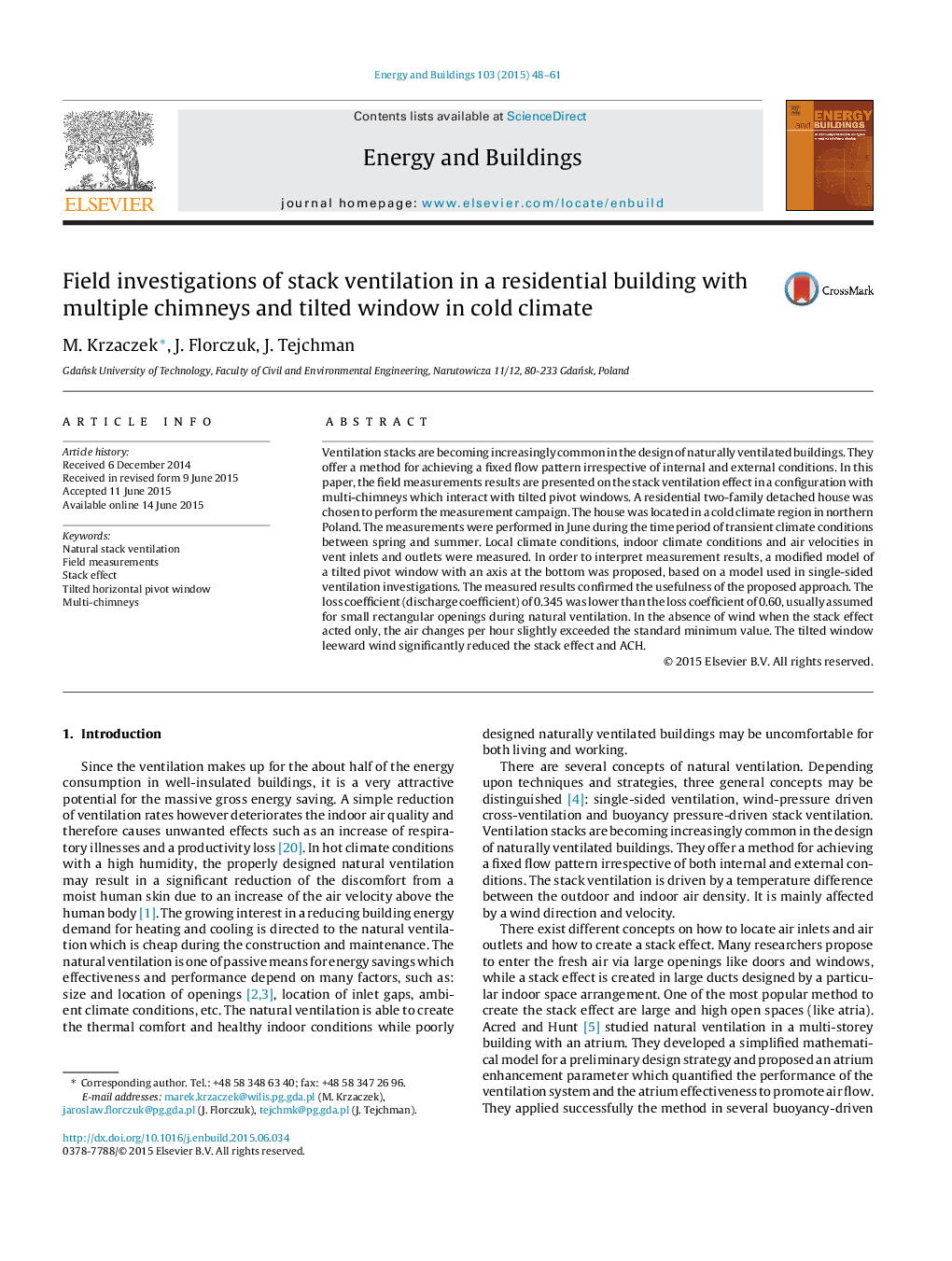| Article ID | Journal | Published Year | Pages | File Type |
|---|---|---|---|---|
| 6731159 | Energy and Buildings | 2015 | 14 Pages |
Abstract
Ventilation stacks are becoming increasingly common in the design of naturally ventilated buildings. They offer a method for achieving a fixed flow pattern irrespective of internal and external conditions. In this paper, the field measurements results are presented on the stack ventilation effect in a configuration with multi-chimneys which interact with tilted pivot windows. A residential two-family detached house was chosen to perform the measurement campaign. The house was located in a cold climate region in northern Poland. The measurements were performed in June during the time period of transient climate conditions between spring and summer. Local climate conditions, indoor climate conditions and air velocities in vent inlets and outlets were measured. In order to interpret measurement results, a modified model of a tilted pivot window with an axis at the bottom was proposed, based on a model used in single-sided ventilation investigations. The measured results confirmed the usefulness of the proposed approach. The loss coefficient (discharge coefficient) of 0.345 was lower than the loss coefficient of 0.60, usually assumed for small rectangular openings during natural ventilation. In the absence of wind when the stack effect acted only, the air changes per hour slightly exceeded the standard minimum value. The tilted window leeward wind significantly reduced the stack effect and ACH.
Keywords
Related Topics
Physical Sciences and Engineering
Energy
Renewable Energy, Sustainability and the Environment
Authors
M. Krzaczek, J. Florczuk, J. Tejchman,
